
- Featured Articles
- Report Card Comments
- Needs Improvement Comments
- Teacher's Lounge
- New Teachers
- Our Bloggers
- Article Library
- Featured Lessons
- Every-Day Edits
- Lesson Library
- Emergency Sub Plans
- Character Education
- Lesson of the Day
- 5-Minute Lessons
- Learning Games
- Lesson Planning
- Subjects Center
- Teaching Grammar
- Leadership Resources
- Parent Newsletter Resources
- Advice from School Leaders
- Programs, Strategies and Events
- Principal Toolbox
- Administrator's Desk
- Interview Questions
- Professional Learning Communities
- Teachers Observing Teachers
- Tech Lesson Plans
- Science, Math & Reading Games
- Tech in the Classroom
- Web Site Reviews
- Creating a WebQuest
- Digital Citizenship
- All Online PD Courses
- Child Development Courses
- Reading and Writing Courses
- Math & Science Courses
- Classroom Technology Courses
- Spanish in the Classroom Course
- Classroom Management
- Responsive Classroom
- Dr. Ken Shore: Classroom Problem Solver
- A to Z Grant Writing Courses
- Worksheet Library
- Highlights for Children
- Venn Diagram Templates
- Reading Games
- Word Search Puzzles
- Math Crossword Puzzles
- Geography A to Z
- Holidays & Special Days
- Internet Scavenger Hunts
- Student Certificates
Newsletter Sign Up

Prof. Development
- General Archive
- Have Some Fun
- Expert Interviews
- Math Corner
- New Teacher Advisor
- Strategies That Work
- Voice of Experience
- Improvement
- Lessons from Our Schools
- Whatever it Takes
- School Climate Archive
- Classroom Mgmt. Tips
- Behavior Management Tips
- Motivating Kids
- Fit to Be Taught
- Rural Education
- Urban Education
- Community Involvement
- Best Idea Ever
- Read About It
- Book Report Makeover
- Bulletin Board
- Parent Issues
- Goal Setting/Achieving
- Teacher Lifestyle Tips
- Classroom Problem Solver
- Strategy of the Week
- Teacher’s Lounge
- Grouping/Scheduling
- In a Sub’s Shoes
- SchoolDoodles
- Teach for America Diaries
- Teaming Up to Achieve
- Earth Science Demos
- Interdisciplinary
- Language Arts
- The Reading Room
- All Columnists...
- Dr. Fred Jones
- Emma McDonald
- Dr. Ken Shore
- School Issues: Glossary
- Top PD Features
- Books in Education
- Reader's Theater
- Reading Coach
- Teacher Feature
- School Improvement
- No Educator Left Behind
- Turnaround Tales
- School Climate
- Responsive Classroom Archive
- Community Context
- School Choice
- School to Work
- Problem Solving Archive
- Homework Hassles
- Teacher’s Lounge
- Virtual Workshop
- In a Sub’s Shoes
- Academic Subjects
- Readers’ Theater
- Math Mnemonics
- Math Cats Math Chat
- Prof. Dev. Columnists
Search form

Chess: A Brain-Building Strategy for the Classroom
Description
Research reveals that chess improves children's critical thinking and problem solving skills. One indicator of that fact, according to America's Foundation for Chess (AF4C), is that chess players demonstrate higher math and reading test scores. The AF4C cites chess's ability to improve visual memory, attention span, spatial reasoning, the capacity to predict and anticipate consequences, and the ability to use criteria to drive decision making and to evaluate alternatives.
Learn More About the Educational Benefits of Chess Chess Club Teaches Thinking Skills, Sportsmanship A chess club at Northwoods Elementary School involves kids, parents, and a volunteer coach. An annual Chess Challenge brings in kids and families from the wider community to enjoy this thinking persons game.
Chess, Anyone? -- Chess As an Essential Teaching Tool Educator Brenda Dyck reflects on whether smart kids play chess or chess makes kids smart. She ponders the thinking byproducts of playing chess, including the game's impact on students' skills, thinking abilities, and self-esteem.
Chess Clubs Give Kids New Skills -- and New Hope Volunteers teach members of the Young Masters Chess Club in Reno, Nevada, how to play the game of chess -- and much more. Chess is a tool for teaching such skills as concentration and critical thinking. Chess is a game that can change kids' lives.
EW Lesson Plans

EW Professional Development
Ew worksheets.

 Sign up for our free weekly newsletter and receive top education news, lesson ideas, teaching tips and more! No thanks, I don't need to stay current on what works in education! COPYRIGHT 1996-2016 BY EDUCATION WORLD, INC. ALL RIGHTS RESERVED. COPYRIGHT 1996 - 2024 BY EDUCATION WORLD, INC. ALL RIGHTS RESERVED.
 Chess for Students: Building Critical Thinking SkillsAre you looking for a fun and engaging way to help your students develop critical thinking skills? Look no further than chess! Chess is a timeless game that has been proven to enhance cognitive abilities and critical thinking in students of all ages. In this article, we will explore the various ways in which chess can benefit students and provide practical tips for integrating chess into the curriculum. Whether you are a teacher, a parent, or a student yourself, this article will show you how chess can be a valuable tool for building essential critical thinking skills. The Benefits of Learning Chess for StudentsImproves critical thinking skills. Chess is a game that requires players to think strategically and plan their moves ahead of time. By playing chess, students can develop and improve their critical thinking skills. They learn to analyze the board, evaluate different options, and anticipate the potential consequences of their moves. This mental exercise helps students become better problem solvers and decision-makers in various aspects of life. Enhances problem-solving abilitiesChess is a game of endless possibilities and complex situations. When students engage in playing chess, they are exposed to different scenarios where they need to find the best possible solution. This constant exposure to problem-solving situations helps students develop their ability to think creatively and critically. They learn to identify patterns, evaluate options, and make calculated decisions. These problem-solving skills acquired through chess can be applied in academic subjects, professional careers, and everyday life. Develops concentration and focusChess requires deep concentration and focus. During a game, students need to pay attention to every move made by their opponent and analyze the consequences of their own moves. This intense mental engagement helps students develop their ability to concentrate, focus, and stay attentive for extended periods. With regular practice, students can improve their attention span and learn to block out distractions. These enhanced concentration and focus skills gained through chess can be beneficial in academic studies, work environments, and other areas that require sustained attention. In conclusion, learning chess offers numerous benefits to students. It improves their critical thinking skills, enhances problem-solving abilities, and develops concentration and focus. By engaging in this intellectually stimulating game, students not only enjoy the thrill of competition but also acquire valuable skills that can positively impact their academic and personal lives. How Chess Can Help Build Critical Thinking SkillsAnalyzing the board and evaluating positions. One of the key ways that chess helps students build critical thinking skills is by teaching them how to analyze the board and evaluate different positions. In chess, each move has consequences, and students quickly learn that they need to carefully consider their options before making a move. They learn to look for patterns, assess the strengths and weaknesses of their pieces and their opponent’s pieces, and predict possible future moves. This process of analyzing the board and evaluating positions helps develop their ability to think critically and make informed decisions. Thinking ahead and planning strategiesAnother important aspect of chess that helps develop critical thinking skills is the need to think ahead and plan strategies. In chess, players must anticipate their opponent’s moves and plan their own moves accordingly. This requires students to think strategically and consider multiple possibilities before making a move. They learn to think several moves ahead and consider the potential consequences of each move. By constantly thinking ahead and planning strategies, students develop their ability to think critically and make strategic decisions. Making decisions based on logical reasoningChess also teaches students to make decisions based on logical reasoning. In chess, there are rules and principles that guide players’ decisions. Students learn to apply these rules and principles to assess the board and make logical decisions. They learn to identify patterns, calculate possible outcomes, and choose the most logical and efficient moves. This process of making decisions based on logical reasoning helps students develop their critical thinking skills and trains them to think rationally and analytically. Overall, chess provides an excellent platform for students to build critical thinking skills. Through analyzing the board and evaluating positions, thinking ahead and planning strategies, and making decisions based on logical reasoning, students develop the ability to think critically, strategize effectively, and make informed decisions not only in chess but also in various aspects of their academic and personal lives. Chess as an Educational ToolChess has long been recognized as an effective educational tool for students of all ages. Incorporating chess into the curriculum can have a significant impact on students’ critical thinking skills, cognitive development, and academic performance. This article explores the benefits of using chess as an educational tool and discusses how it can be incorporated into the curriculum. Incorporating Chess into the CurriculumIntegrating chess into the curriculum offers a unique and engaging way to promote critical thinking skills among students. It can be introduced as a stand-alone subject or integrated into existing subjects like mathematics, problem-solving, or logic. By incorporating chess into the curriculum, students can develop a range of skills such as strategic thinking, problem-solving, decision-making, and logical reasoning. Chess can be taught at various grade levels, with the complexity of the game increasing as students progress. Teachers can introduce chess gradually, starting with the basics and gradually moving towards more advanced strategies. Incorporating chess into the curriculum not only provides an enjoyable learning experience but also enhances students’ overall cognitive abilities. The Role of Chess in Cognitive DevelopmentChess is a game that requires players to think ahead and consider multiple possibilities and outcomes. By playing chess, students develop their critical thinking and analytical skills. They learn to anticipate their opponent’s moves and devise strategic plans accordingly. This process of analyzing, strategizing, and making decisions enhances their cognitive abilities and helps them develop skills that can be applied to various academic and real-life situations. Moreover, chess also improves memory and concentration. Players need to remember and recall various moves, patterns, and strategies throughout the game. By constantly exercising their memory and concentration, students can improve their ability to retain information and focus on tasks for extended periods. The Impact of Chess on Academic PerformanceNumerous studies have shown a positive correlation between chess and academic performance. By playing chess, students improve their critical thinking skills, which directly translates to improved problem-solving abilities in other subjects. The logical reasoning skills developed through chess can be applied to subjects like mathematics, science, and even language arts. Chess also fosters a sense of discipline and patience among students. The game requires players to think carefully and take their time before making a move. This ability to pause, analyze the situation, and make informed decisions can significantly benefit students in their academic pursuits. Furthermore, chess enhances students’ ability to handle pressure and make quick decisions under time constraints. These skills are invaluable in exams and other high-pressure academic situations. In conclusion, incorporating chess into the curriculum can have a profound impact on students’ critical thinking skills, cognitive development, and academic performance. Chess serves as an effective educational tool that promotes strategic thinking, problem-solving, and logical reasoning. By integrating chess into the curriculum, educators can provide students with a unique and engaging learning experience that enhances their overall academic abilities. Tips for Teaching Chess to StudentsStarting with the basics: rules and moves. Teaching chess to students begins with laying a strong foundation of the game’s rules and moves. Introduce them to the chessboard, explaining the setup and purpose of each piece. Start by teaching the basic moves of each piece, such as how the pawns move forward, the rooks move horizontally and vertically, and the knights move in an L-shape. Encourage frequent practice to help students become familiar with these fundamental rules. Introducing chess tactics and strategiesOnce students grasp the basic rules and moves, it’s time to delve into chess tactics and strategies. Teach them about the importance of controlling the center of the board, developing their pieces, and protecting their king. Introduce tactics like forks, pins, and skewers, which will help them gain an advantage over their opponents. Teach them how to think ahead, anticipate their opponent’s moves, and plan their own moves strategically. Encourage critical thinking, problem-solving, and patience during gameplay. Organizing chess tournaments and competitionsTo foster a competitive spirit and provide students with an opportunity to showcase their skills, organizing chess tournaments and competitions is essential. Create a supportive and encouraging environment where students can compete against their peers. Consider organizing friendly matches within the school, or even hosting inter-school chess tournaments. This not only motivates students to improve their skills but also helps them develop sportsmanship and resilience. Recognize and reward their efforts, which will further encourage their interest in chess and critical thinking skills. By following these tips, you can lay a strong foundation of chess knowledge, tactics, and strategies in students. Remember to make the learning experience enjoyable and engaging, allowing them to develop critical thinking skills that will benefit them both on and off the chessboard. Case Studies: Success Stories of Chess in EducationCase study 1: chess program in a primary school. In this case study, we will explore the impact of a chess program in a primary school setting. The program was implemented with the aim of enhancing critical thinking skills among students. The school noticed a significant improvement in the students’ problem-solving abilities and strategic thinking after integrating chess into their curriculum. Not only did the students excel in chess tournaments, but they also showcased improved academic performance in subjects such as math and science. This case study demonstrates the positive influence of chess on young minds and highlights its potential to foster critical thinking skills from an early age. Case study 2: Chess club in a high schoolIn this case study, we will delve into the experiences of a high school chess club and its impact on students’ critical thinking skills. The chess club provided a platform for students to engage in strategic gameplay and develop their problem-solving abilities. Through regular practice sessions and participation in competitions, students not only improved their chess skills but also witnessed a growth in their critical thinking capabilities. The chess club became a hub for intellectual development, fostering teamwork, concentration, and decision-making skills among its members. This case study exemplifies the benefits of chess clubs in high schools and their ability to enhance critical thinking skills alongside promoting camaraderie among students. Case study 3: Chess as part of a gifted programThis case study examines the integration of chess within a gifted program and its contribution to nurturing critical thinking skills. The gifted program recognized the potential of chess as a tool to challenge and stimulate the minds of intellectually advanced students. By incorporating chess into their curriculum, the program aimed to provide a unique learning experience that would foster critical thinking and problem-solving skills. The students involved in the program demonstrated remarkable progress in their ability to analyze complex situations, think strategically, and make informed decisions. This case study highlights the effectiveness of incorporating chess into gifted programs for unlocking the full potential of students’ critical thinking abilities. Chess is a powerful tool for developing critical thinking skills in students. Through the strategic and analytical nature of the game, students are able to enhance their problem-solving abilities, decision-making skills, and logical reasoning. As they engage in chess, students learn to think ahead, weigh the consequences of their moves, and adapt their strategies accordingly. Furthermore, chess fosters patience, concentration, and resilience, qualities that are essential for success in academics and beyond. By incorporating chess into the curriculum, educators can provide students with a valuable opportunity to cultivate their critical thinking skills and prepare them for the challenges of the future.   Tips For Teaching Chess In The Classroom Teaching children to play chess has many benefits, such as developing critical thinking skills, concentration, and perseverance. Teaching Chess to Students: Practical Tips and InsightsChess has been a popular game for centuries and is known for its strategic complexity. Teaching Chess to Students: Practical Tips and Insights Chess has been a popular game for centuries and is known for its strategic complexity. Teaching children to play chess has many benefits, such as developing critical thinking skills, concentration and perseverance. Whether you’re a teacher or a parent looking to introduce young people to chess traditionally or chess online , this guide provides valuable insight into how to effectively teach chess. Learn the BasicsBefore teaching others to play chess, it is important to get yourself in control of the game. Familiarize yourself with the rules, basics and objectives of the game. There are many online resources, tutorials, and books to help you improve your understanding of chess. Let’s Start with the BasicsWhen introducing chess to beginners, start with basic concepts. Conquer enemy pieces by teaching the moves of each piece. The focus should be on one piece at a time, starting with pawns, rooks, knights, bishops, queens, and finally, kings. 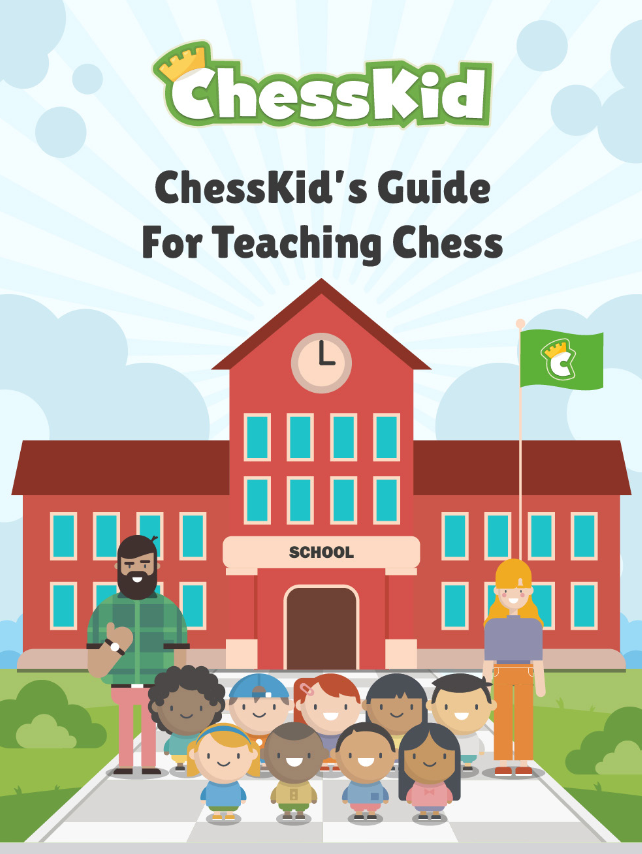 Make it InteractiveChess can be an unreal concept for young minds. To make learning more engaging, use visual aids such as large demonstration boards or interactive chess software. Allow students to control their own pieces and move them around the board while learning different moves. Encourage students to ask questions and give clarifications. Demonstrate the strategyOnce you understand the basic steps, let’s introduce the concept of strategy. Teach them the importance of controlling the center of the board, developing your pieces and planning. Then demonstrate common tactics such as forks, pins and skewers. Discuss the players’ strategies using the example of a famous chess match. Chess Provides Practice OpportunitiesChess is a game that requires practice to improve. Create opportunities for students to compete against each other. Establish friendly tournaments and chess clubs for students to participate and learn from their peers. Encourage regular practice and provide students with resources to play against online or computer opponents. 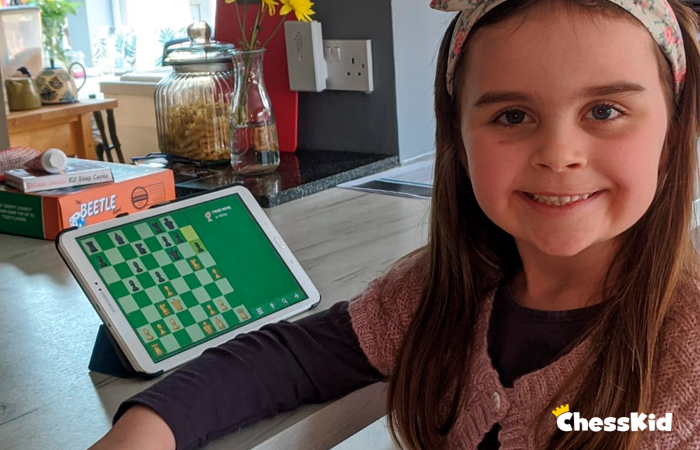 Foster a Positive Learning EnvironmentChess can be a difficult game, but creating and encouraging a learning environment is important. Emphasize that mistakes are part of the learning process and give constructive feedback. Celebrate achievements and highlight areas for improvement. Encourage good sportsmanship and teach students how to show compassion for both winners and losers. Incorporating Chess into the CurriculumChess is a valuable educational tool because it can be incorporated into many different subjects. Use chess to teach problem-solving, logical thinking, and critical thinking skills. Discover the connection between chess and mathematics, history and literature. Consider incorporating chess into a dedicated chess club or as part of your school’s extracurricular activities. Use online resourcesIn today’s digital age, there are many online resources available to help you teach chess. Websites, chess tutorials, and chess apps complement the lessons and provide additional learning opportunities. Encourage students to explore online resources and compete against other players around the world. This is one of the best ways to grow as a beginner, as these online resources are really invaluable in terms of the experience you get. For those Seeking Professional DevelopmentIf you are a teacher, you should consider attending professional development workshops or chess teaching courses. These programs provide additional strategies, teaching methods, and resources to increase your effectiveness as a chess teacher. Stay on top of the latest developments in chess education to give your students the best learning experience. 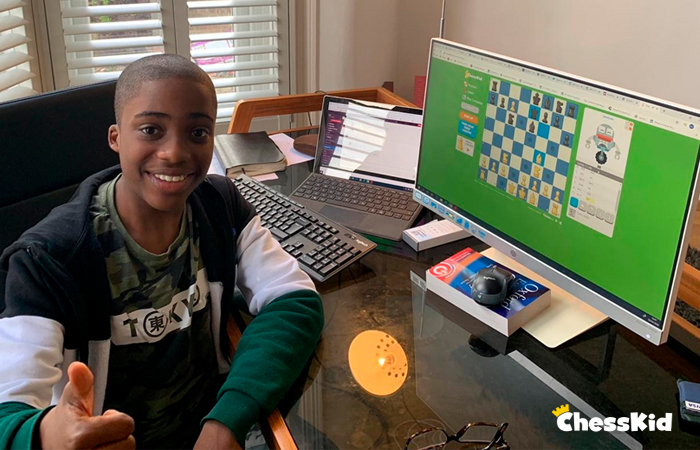 Large Demonstration BoardsA large demonstration board is a powerful tool for learning chess, providing better visualization, interactive engagement, and improved lesson dynamics. Incorporating them into your chess lessons greatly contributes to the overall learning experience and skill development. A large demonstration board provides a visual aid that promotes understanding and participation during chess lessons and demonstrations and has proven to be an invaluable aid to chess learning. A large demonstration board provides a clear, zoomed-in view of the chessboard, helping learners understand the moves and strategies being taught. The large pieces and squares on these boards allow students to more effectively understand concepts by visualizing different positions, tactics and patterns more clearly. Chess SoftwareChess, also known as “the game of kings”, has been enjoyed by millions of people for centuries. In recent years, the advent of interactive chess software has revolutionized the way enthusiasts approach the game. The other part of the article examines the benefits and features of interactive chess software and focuses on how it takes the chess experience to a new level. Improved Learning and TrainingOne of the most important benefits of interactive chess software is its ability to improve learning and training for players of all skill levels. These software programs offer comprehensive tutorials, interactive lessons, and exercises for both novice and advanced players. Users can learn rules, basic strategies, and advanced tactics through engaging tutorials and real-time feedback. Additionally, interactive chess software often integrates artificial intelligence (AI) algorithms to analyze gameplay, providing valuable insight into individual player strengths and weaknesses. This allows users to review computer-generated ratings and suggested actions to identify areas for improvement and refine strategies. Interactive chess software gives users the opportunity to play against AI opponents of varying difficulty, making it an ideal platform for practice and skill development. The AI engines employed in these programs are designed to mimic human thought patterns, providing a realistic and rewarding experience. Additionally, users can personalize their gaming experience by adjusting AI skills, level of play, and timing to their liking. This flexibility allows players of all skill levels to find suitable opponents and test their skills on a regular basis. Community EngagementInteractive chess software encourages community participation by providing a platform for players to compete online. These platforms offer a variety of features, such as live tournaments, multiplayer matches, and leaderboards where users can interact, learn, and share experiences with other chess enthusiasts around the world. Additionally, interactive chess software often includes analytics features that allow players to review and analyze their game. Users can replay the game move by move, explore different variations, and identify key turning points. This analytics component helps players understand their strengths and weaknesses, know their mistakes, and refine their strategies for future games. TeachThought is an organization dedicated to innovation in education through the growth of outstanding teachers. Checkmate … Teaching Chess to Developing Critical Thinking Skills School Heads // February 9, 2011 Yet second- and third-graders in almost 2,000 classrooms in 27 states are having fun with chess while learning critical thinking skills and building self-esteem and confidence, thanks to First Move, a program that started in 2000, by America’s Foundation for Chess (AF4C). “In nearly 30 nations around the world, chess is integrated into the country’s scholastic curriculum,” said AF4C Executive Director Wendi Fischer. “In the U.S., chess is barely incorporated into American schools. Our goal with First Move is to bring positive change to our education system and make chess a regular part of every child’s classroom experience.” Fischer notes that there are numerous studies that chess can have a tremendous impact on cognitive and critical thinking skills. First Move curriculum is specifically mapped to standards for second and third grade. Students benefit from the critical thinking, group problem solving, and social interaction that chess requires, but they have fun. According to AF4C, students transfer the intellectual, social, and emotional qualities of the game to school and real world success. Warden Elementary School in Warden, WA, has incorporated the First Move program into its program. “Students tend to be tentative and want someone else to do their work for them, give them the answer, or figure it out for them,” said Warden Principal Jill Massa. “But with chess games that they play as part of First Move, they are forced to think for themselves in a fun way which builds their confidence.” Fischer says in “The Educational Value of Chess” that chess is all about “thinking strategically and foreseeing consequences. It’s about lines and angles, weighing options and making decisions. Chess might be the perfect teaching and learning tool.” While some schools offer chess as a club, to foster fun and learning, members are predominantly boys. First Move integrates chess into the classroom, reaching all children, says Fischer. “Students who wouldn't have thought to join the chess club on their own, are more apt to join after having been exposed to chess in their classroom.” Sartell Middle School in Sartell, MN, does not have the First Move program, but does have a chess club. But one chess club member there sees the benefits that chess does have on learning. “Chess is like a more advanced form of checkers. You have to use lots of strategy. And it can help your grades. I’ve noticed my grades improve,” said this Sartell student. Another sixth-grader mentioned that while Wii games were her favorite thing, chess gives her an alternative. “ … sometimes I like to do stuff that’s more quiet. It just depends on how I’m feeling.” Not only does chess improve learning and build skills, it also levels the playing field so to speak. Chess crosses all socioeconomic boundaries and has no language barrier, Fischer says. “Age, gender, ethnic background, religious affiliation, size, shape, color, and language don't matter when playing chess. Everyone is equal on the chessboard. Students who are English language learners find success with chess, because they don't face language barriers on the chessboard.” At Sartell, Josh Bentley is a volunteer chess instructor. He says, “Chess teaches them … what your opponent can throw at you … preparing for the unseen by trying to predict … just like life.” Check out this story about chess in the classroom . Share this article: | | PROFESSIONAL DEVELOPMENT FOR PRIVATE SCHOOL LEADERS Explore ISM’s 40+ professional development events.Develop new skills, gain confidence in your role, and lead with clarity. Be mentored by leaders who are experts in their field, many currently working in private schools today. Get hands-on experience, network with fellow school leaders, and walk away with an action plan you can use the minute you return to campus. SEE ALL EVENTS  Upcoming Events 1/29/2024 — 1/31/2024 Strategic Financial Planning: A Comprehensive Approach Status: Open More EventsThe ChessEdu.org curriculum is designed to use chess as a tool for teaching problem-solving, creative thinking, and abstract reasoning in a classroom setting, be it in a public or private school, home school or other institution, or for personal use. Chess provides the opportunity to teach students how to think their way through solving complex problems, and it is a terrific way to introduce STEM, STEAM, and Common Core criteria. Children enjoy chess as a game. Yet, chess offers the means of teaching mental abilities used throughout life: concentration, critical thinking, abstract reasoning, strategic planning, problem solving, visualization skills, creativity, and patience to name just a few. READ MORE DOWNLOAD CURRICULUM WATCH OUR VIDEO © 2014 ChessEdu.org, Inc. All Rights Reserved | Website Design by Paraclete Multimedia  How Chess Can Change Schools Kate Stoltzfus is a freelance editor and writer for ASCD. ASCD is dedicated to professional growth and well-being.Let's put your vision into action., related blogs.  Self-Care Shouldn’t Be an Emergency Measure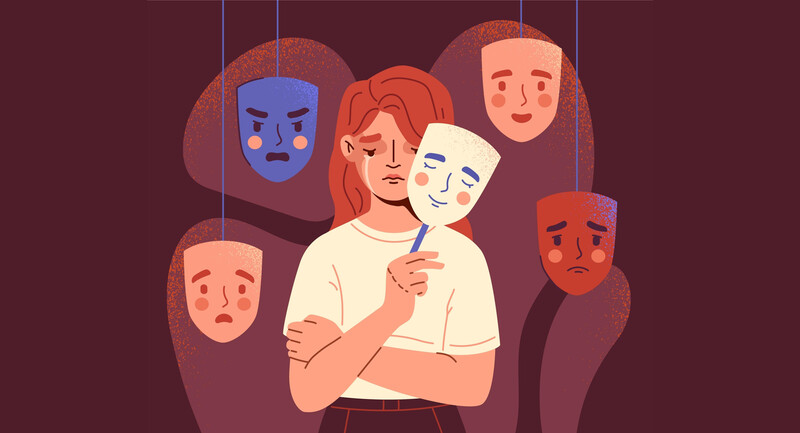 Is it Emotional Regulation or Repression? Moving Toward District-Wide Wellness Curiosity: A Gift for Yourself and Your Students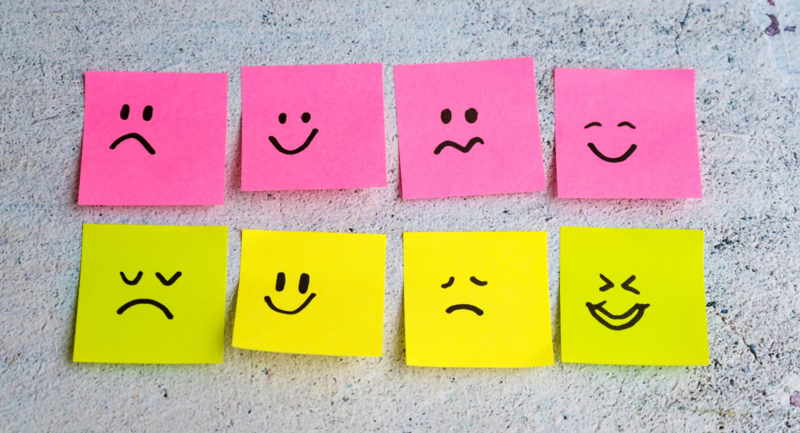 How Self-Regulation Can Reduce Student AnxietyThe Benefits of Playing Chess: Boosting Critical Thinking SkillsCooper Oliver Chess is a game that has been played for centuries, captivating minds and challenging strategists. However, its benefits go beyond mere entertainment. Chess has been widely recognized for its ability to boost critical thinking skills. In this article, we will explore how playing chess can have a positive impact on cognitive abilities and why it is considered an excellent tool for developing critical thinking. Enhancing Problem-Solving AbilitiesChess is a game that requires players to think several moves ahead and anticipate their opponent’s tactics. This forward-thinking approach fosters problem-solving abilities and helps players develop a proactive mindset. By analyzing different possibilities and considering the consequences of each move, chess players learn to evaluate and choose the best course of action. Playing chess trains the brain to think critically and strategically. It encourages players to break down complex situations into smaller, more manageable parts, allowing them to identify patterns and make informed decisions. This type of thinking is transferable to real-life scenarios and can be beneficial in various domains, including academics, career, and personal life. Developing Logical Reasoning SkillsOne of the core components of critical thinking is logical reasoning. Chess provides an ideal platform for honing this skill. The game follows a set of rules and logical principles that players must abide by. This means that every move made in chess must have a logical basis — each action has consequences, and each decision must be backed by reasoning. Through regular chess play, individuals foster their ability to think logically and make sound judgments. They learn to consider cause and effect, evaluate different possibilities, and connect ideas. These logical reasoning skills acquired on the chessboard can be applied to various situations, helping individuals make more rational and informed choices in their daily lives. Enhancing Concentration and FocusChess demands intense concentration and focus. Players must carefully analyze the current state of the game, evaluate potential moves, and anticipate their opponent’s strategy. By engaging in this mentally challenging game, individuals strengthen their ability to concentrate and maintain focus for extended periods. The concentration skills developed through chess can have a positive impact on other areas of life, such as academics and work. Improved focus allows individuals to stay engaged with tasks, solve problems more efficiently, and make fewer errors. Consequently, chess players often exhibit higher levels of productivity and accuracy in their endeavors. Boosting Memory RetentionChess is not just a game of strategy; it also serves as an excellent exercise for memory retention. During a game, players must remember previous moves, openings, and tactics employed by both themselves and their opponent. Recalling this information is crucial for making informed decisions and identifying patterns. Regular chess play has been linked to improvements in both short-term and long-term memory. The constant mental stimulation involved in remembering moves and strategies strengthens the brain’s ability to retain information. This enhanced memory function can be advantageous in various aspects of life, ranging from academics and professional endeavors to everyday tasks. Cultivating Creativity and OriginalityWhile chess is a game with defined rules, it also allows for creativity and originality in gameplay. Players must constantly devise new strategies and tactics to outwit their opponents. This aspect of chess fosters creativity and encourages individuals to think outside the box. By actively engaging in creative problem-solving on the chessboard, players enhance their ability to approach challenges from different perspectives. This skill can prove invaluable in both personal and professional life, as it empowers individuals to find innovative solutions to complex problems. Chess is not just a game; it is a powerful tool for developing critical thinking skills. Through chess, individuals enhance their problem-solving abilities, develop logical reasoning skills, and cultivate concentration and focus. Additionally, chess boosts memory retention and fosters creativity and originality. These cognitive benefits are transferable to various aspects of life, making chess an excellent activity for individuals of all ages. So, if you’re looking for a way to boost your critical thinking skills while engaging in a challenging and intellectually stimulating activity, it’s time to dust off your chessboard and embark on a journey that will not only test your strategic prowess but also sharpen your mind. Please check out the following related articles for more insights:
 Written by Cooper OliverDesigning user experiences that delight. Crafting beautiful interfaces. Innovation is my driving force. Text to speech
When Implementing Games In Your Classroom, Don’t Forget About ChessTeacher-turned-principal Salome Thomas-EL says chess can help students develop a slew of practical skills they can use for many years to come. 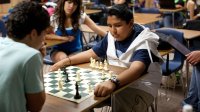 Over the last 30 years, teacher-turned-principal Salome Thomas-EL has found success leveraging the game of chess to teach math and history at the elementary and middle school levels, writes Kate Stoltzfus for ASCD . But chess is not just about rote academics, says Thomas-EL: The game boosts student confidence, teaches them critical thinking and problem solving skills, and engages them behaviorally, emotionally, and cognitively , along with providing a host of other benefits . With enough practice, skilled chess players can even utilize both the left and right sides of their brain when playing. “What I often say is that smart students don’t always play chess, but students who play chess always become smart,” said Thomas-EL in the interview with ASCD. “Students I had 30 years ago reach out to me and say they still remember those matches and are still using those skills in life, in business, in the corporate world, in law school.” Many of Thomas-EL’s students are disadvantaged students of color, who have historically lacked access to enrichment opportunities that challenge their minds, he says. Chess has been a “great equalizer” that has let them prove themselves in a pastime traditionally associated with intellectuals and affluence. His students have gone on to play in numerous tournaments and won, collecting trophies and sometimes competing against players several years their senior. “My idea was just to give them an environment where they could be comfortable exhibiting their greatness, because that’s not always easy and not always available,” he told ASCD. “Chess eliminated the preconceived notions, all the biases, the judgment.” Thomas-EL’s observations are backed by an array of studies that show chess improves students’ academic and social and emotional skills. Here are some of the benefits of teaching chess to students—even when starting at a young age. Builds Confidence in Students: Research conducted by the St. Louis Chess Club showed that 72 percent of students polled believe chess made them more confident with learning challenges; 75 percent of those same students also felt chess motivated them to seek out more difficult opportunities. Thomas-EL says it’s important to ensure students are continually challenged in their learning. When his elementary and middle school students were winning games too easily, he matched them against more skilled high school players. “Failure is motivating. Success can be paralyzing,” he says. “We have to be okay with sort of getting out of that comfort zone and moving into the learning zone, which is close to the frustration zone.” Builds Problem Solving Skills: In chess, players must be thinking critically at all times when faced with a series of challenges on the board, predicting several moves ahead of their opponent to win—a feature that helps students develop stronger problem-solving capabilities, says Thomas-EL. A study conducted in the early '90s suggests that students who learned general problem-solving skills while playing chess could transfer those same skills to another academic domain , in this case, poetry. Boosts Spatial-Analysis Skills: It’s estimated that approximately 2 million students in the K-12 schools are considered “spatially-talented” with abilities that are not traditionally identified during the gifted and talented screening process . These students possess skills that could be bolstered through chess because the game requires players to mentally picture a move they or their opponent may make on the board without physically touching any pieces. “[Chess] teaches students to not only see the turn, but to see around the turn, because in chess you have to think five moves ahead,” says Thomas-EL. Improves Math Scores: A study from 2015 showed a correlation between chess and improved math scores . Out of a group of 560 students, half were exposed to “normal school activities” while the other 280 students received in-person chess lessons and online training to bolster their mathematical problem-solving skills. Thomas-EL says he’s used chess to teach mathematics in special education classrooms, showing kids that “bishops move on diagonals, knights move on right angles,” for example. 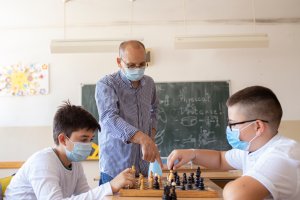 Students don’t have to wait until their next day back to in person school to continue their journey with chess, emphasizes Thomas-EL. Chess sets are fairly inexpensive and can be sent home with students. Websites like Chess.com also have resources for free games online, and in-school programs like First Move help students and staff learn how to play. Though he acknowledges that not every student will become a decorated player, Thomas-EL says there is value in providing students the opportunity to play—all the while learning to, at times, gracefully accept defeat. “Building resilient students is not about teaching them how to become successful,” he says. “It’s about teaching them how to respond when they’re not successful.”

8 Critical Thinking Skills Kids Learn at Chess CampKurt putnam. It's never too early for a child to learn how to play chess. In fact, many schools these days are incorporating chess into daily learning to help children develop critical thinking skills and even increase student IQs. There are eight distinct critical thinking skills that your child can develop by playing chess on a regular basis. 8 Critical Thinking Skills Kids Learn at Chess Camp:1. problem solving. In its most simplistic form, chess is quite similar to a large puzzle. In order to "solve" a chess game, players must use problem-solving skills to decide which pieces they should move to yield the best results on the board. As players advance and start playing timed games, chess teaches students how to solve problems on-the-fly. In fact, one study conducted amongst school-aged children found that students who participated in chess instruction over a week-long period significantly improved their problem-solving abilities. 2. Abstract ReasoningThe ability to engage in abstract reasoning is undoubtedly beneficial to any school-aged student, both in academia and beyond. Chess helps students improve their abstract reasoning skills by helping them learn to recognize patterns on the gameboard and develop strategies based on those patterns. Chess invites students to practice abstract reasoning through "if, then..." scenarios. For example, "If I move my rook here, then I can take out his bishop." Abstract reasoning skills go hand-in-hand with problem solving, making these two of the most beneficial skills gained from learning the game of chess as a child. 3. Calmness Under PressureWhen asked to think of situations where their children must stay calm under pressure, most parents tend to think of athletics. While sports may have more dramatic moments, a child might be asked to take a game-winning shot only once or twice a season (if ever). In reality, few athletic activities provide as many opportunities to remain calm under pressure as a typical game of chess. When students play games with timed moves, they must repeatedly consider their current position on the board and determine the best possible move before time runs out. Learning to stay calm while thinking through possible moves gives students the ability to make informed and thought out decisions while under pressure in real-life scenarios down the road. 4. PatienceThe average game of chess goes on for about 40 moves before one player emerges victorious over the other. Each of these moves must be carefully calculated, planned and executed. The slightest lapse in concentration could lose a pawn, or an overly aggressive move could lead to a checkmate for the opposing player. This careful calculation teaches children the virtue of patience. Not only must they stay focused while waiting for an opponent to take his or her turn, but they must also exercise patience by not rushing the number of moves it takes to complete the game. The same simply cannot be said of sporting events where the game is over when time runs out and an aggressive defense can often force a turnover. A chess game can last 20 minutes or several hours. 5. SportsmanshipStudents learn chess by discovering which moves work and which ones don’t in certain scenarios. In a chess game, there's almost always a winner and students will quickly find that they're going to lose matches from time to time. Games and activities where there's a clear-cut winner encourage students to become more sportsmanlike, when they win and when they lose. When children learn early to be good sports, it’s easier for them to overcome loss or failure later on in life.  6. Creative ThinkingTo defeat an opponent, a chess player must become a creative thinker. During each game, they need to imagine what will happen with each possible move on the board and then quickly come up with new strategies on the fly. Through chess, we learn how to analyze a situation by focusing on important factors and by eliminating distractions. We learn to devise creative solutions and put a plan into action. Jim Celone, president of the Connecticut State Chess Association Learning how to use creative thinking skills in real-world scenarios helps students become better problem solvers in their everyday life. 7. Pattern RecognitionLast, but not least, students learn to recognize and respond to patterns as they gain skill at playing chess. This involves not only knowing the different move patterns each chess piece is capable of, but recognizing the potential consequences of each available move and making the right decision based on how each piece is placed on the chessboard. 8. Strategic ThinkingAs students combine all the skills above as they learn to play chess, they develop their strategic thinking skills. They learn to combine problem solving, pattern recognition and creative thinking to make their moves. They discover how to be patient until just the right moment for a big move, and learn that each loss is just an opportunity to perform better the next time. Most importantly, students learn how to develop and execute a strategy. Why Consider Chess Camp?If you're serious about helping your child get ahead in academia and life, signing him or her up for a summer chess camp is a smart move. Not only will your child have fun learning a classic game, they’ll develop valuable life skills that will set them up for future success.  Topics Chess You may also like:Browse topics.
 How to Teach Chess to Kids: Tried and Tested Methods Chess is a game of strategy and critical thinking, qualities valuable to people of all ages, especially children. Teaching chess to kids helps them develop cognitive abilities and problem-solving skills. Table of Contents The Benefits of Chess for KidsResearch has shown that playing chess can enhance a child’s memory, concentration, creativity, and strategic thinking. Not to mention, it’s an engaging way for kids to learn about sportsmanship and the art of winning and losing gracefully. Getting Started with Chess TeachingTeaching chess to children isn’t always straightforward. Here are some tips to get you started. Understanding the Child’s MindBefore teaching chess, understand that every child is unique and might require different teaching approaches. Patience and adaptability are key. Chess Equipment for KidsInvest in a child-friendly chess set. Consider sets with larger, colorful pieces that will attract kids and make the learning process fun. Basic Chess Concepts for KidsBegin with the basics to ensure a solid foundation. Teaching Chess Pieces and Their MovesStart by introducing the chess pieces and explaining how each one moves. Make the learning process interactive by allowing the kids to move the pieces on the board. The Concept of Check, Checkmate, and StalemateOnce they’re comfortable with the pieces’ movements, introduce the concepts of check, checkmate, and stalemate. Fun and Engaging Teaching MethodsKeeping the learning process fun and engaging will make kids more receptive. Using Chess StorytellingTurn the teaching process into a storytelling session. Each piece can be a character with a role in the story, making the learning process enjoyable. Incorporating Chess Games and PuzzlesIncorporate simple chess games and puzzles to make learning interactive and fun. Advanced Chess Concepts for KidsOnce they’ve mastered the basics, introduce advanced concepts. Introducing Chess Strategy and TacticsTeach kids about basic strategies and tactics like pinning, forking, and skewering. Teaching Common Chess OpeningsStart teaching them common openings like the Italian Game or the Sicilian Defense. Using Technology in Chess TeachingTechnology can be a powerful tool in teaching chess. Chess Learning Apps and WebsitesThere are numerous apps and websites designed specifically for teaching chess to kids. They can serve as complementary tools to your lessons. Online Chess Tournaments for KidsEnrolling kids in online chess tournaments can enhance their competitive spirit and provide practical experience. Encouraging Regular Practice and ImprovementPractice is key to mastering chess. Setting up a Practice ScheduleEstablish a regular practice schedule. Consistent practice is essential for improvement. Rewarding Progress and EffortRemember to reward progress and effort. This can motivate kids and make them feel accomplished. Parental Involvement in Chess LearningParental involvement can significantly influence a child’s learning process. Supporting Your Child’s Chess JourneyYour support and encouragement can play a vital role in your child’s chess journey. Be their cheerleader and guide. Lessons From Successful Chess ParentsLearn from parents of successful chess prodigies. Their experiences can provide valuable insights. Teaching chess to kids is a rewarding experience. Not only does it equip them with valuable skills, but it also provides a fun and interactive way to spend time together. Inspiring a Lifelong Love of ChessYour goal should not only be to teach them how to play chess, but to instill in them a lifelong love for the game. This way, the learning doesn’t stop at the lessons, and they continuously seek to improve and enjoy the game throughout their lives. Final Thoughts on Teaching Chess to KidsTeaching chess to kids can be a wonderful journey. The joy of seeing a child understand and apply a strategy you taught is immeasurable. Remember, the ultimate goal is not to create a chess champion (although that would be great), but to enhance their cognitive abilities, teach them important life skills, and help them enjoy the beautiful game of chess. After all, chess is not just a game; it’s a lifetime adventure of learning and growth. Happy teaching! Frequently Asked QuestionsWhy should i teach chess to my child. Chess helps enhance a child’s cognitive abilities, problem-solving skills, and critical thinking. It also instils discipline and the ability to strategize, which are beneficial in many aspects of life. At what age can I start teaching chess to my child?While there’s no strict age limit, kids around the age of 5 or 6 generally have the attention span and cognitive ability to understand the basic rules of chess. How can I make learning chess fun for my child?Make the learning process interactive by incorporating storytelling, games, and puzzles. Chess apps and websites specifically designed for kids can also be helpful. How can technology aid in teaching chess to kids?Many chess apps and websites are designed to make learning chess fun and engaging for kids. They often include interactive tutorials, puzzles, and the ability to play games against computer-controlled opponents of varying levels of difficulty. My child is losing interest in chess. What should I do?Try to find out why your child is losing interest. It could be due to a lack of understanding or finding the game too difficult. Make sure to keep the lessons engaging and not too strenuous. Recognize their achievements, no matter how small, to keep them motivated. Are there chess tournaments for kids?Yes, there are numerous chess tournaments specifically designed for kids of various age groups. Participating in these can be a fun way for kids to apply what they’ve learned and gain experience. How often should my child practice chess?Consistent practice is key in chess. A daily practice session of around 15 to 30 minutes can be beneficial. However, it’s important not to force it—keep the sessions enjoyable and stress-free. How can I measure my child’s progress in chess?Progress in chess can be measured in various ways, such as improvement in understanding the rules, applying strategies, or winning games. Using chess software that tracks progress can also be helpful. Related PostsUnderstanding fide titles and chess ratings, the philosophy of chess: exploring the checkmate wisdom, zugzwang explained: the chess move you wish you didn’t have, leave a reply cancel reply. Save my name, email, and website in this browser for the next time I comment. Type above and press Enter to search. Press Esc to cancel. Sign In or RegisterWelcome back. Login to your account below. THE ENHANCEMENT OF STUDENTS' CRITICAL THINKING WITH THE USE OF "CHESS"


 Discover the world's research


 Strategy Games for Education 32 Celtic Avenue, BR2 0RU UPCOMING EVENTS The SMART Method to Teach Chess Our mission is to highlight the educational benefits of using chess as an educational tool to prepare children for life and support teachers and tutors with our expertise. Our vision is to equip more and more educators worldwide to improve their teaching skills in order to help children develop their social, emotional and intellectual skills with chess in education.  Developing children’s 21st-century skills with the SMART Method The Training Course is certificated by the European Chess Union and has been supporting chess educators in classroom teaching since 2017 in several countries and languages. By providing relevant and practical insights, the SMART Method for Teaching Chess has supported more than a thousand individuals in their professional development and in their journey towards using chess as an effective educational tool to prepare children for life. Using chess as an educational tool Using chess as an educational tool requires a combination of skills from educators, including knowledge of the subject matter, effective communication skills, and the ability to inspire and motivate students to maintain their interest in the game. Chess educators have a great responsibility when it comes to classroom teaching. Their effectiveness is the key to successfully developing students’ cognitive, emotional and social skills through the game, therefore the training course aims to support teachers who want to use chess as an educational tool. Besides the educational chess approach, chess educators need to learn about basic pedagogical skills and classroom management techniques to enhance their effectiveness. This training course supports teachers in improving their instructional skills, including how to structure lessons, provide feedback, and create a supportive learning environment to maintain students’ motivation. It also introduces new teaching strategies and techniques for chess in education to help teachers design and deliver effective lessons and achieve better learning outcomes for students. 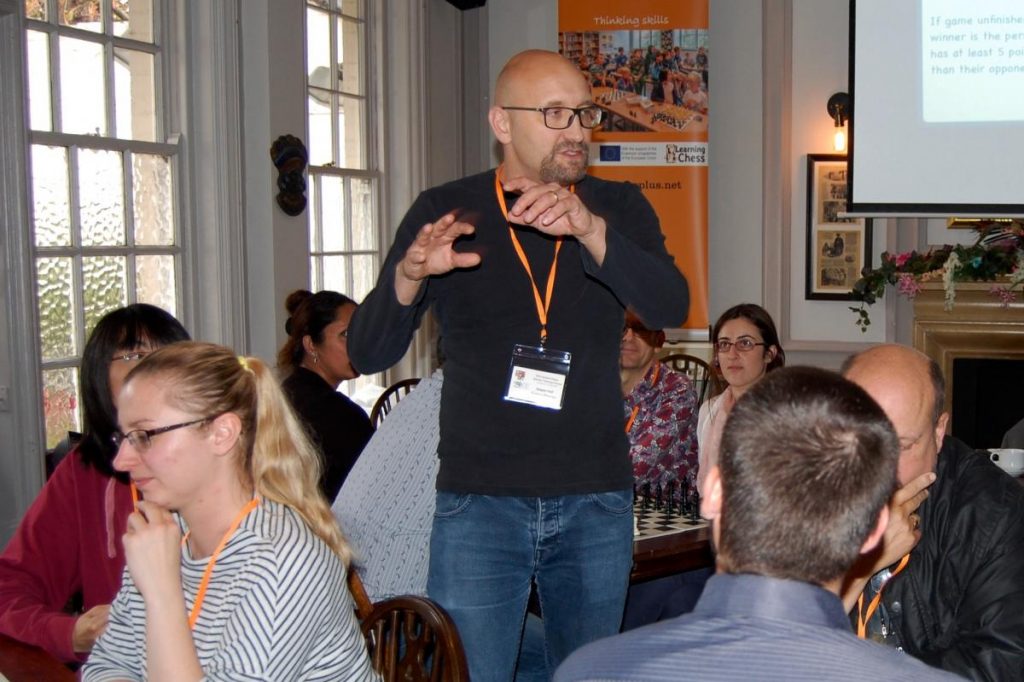 Valuable advice and many interesting techniques and tips for teaching. Many thanks to the whole teaching team for a very useful & interesting weekend. Also enjoyed learning from the comments from other participants. Michael Bennett (UK) Not only delivered what i needed but also inspired me to continue the development. Keler Sufja (Albania) Even areas in which I believed I was already competent content was presented to enhance and develop my methods, and I was introduced to a lot of new ideas too. Very enjoyable course. George Miller (UK) 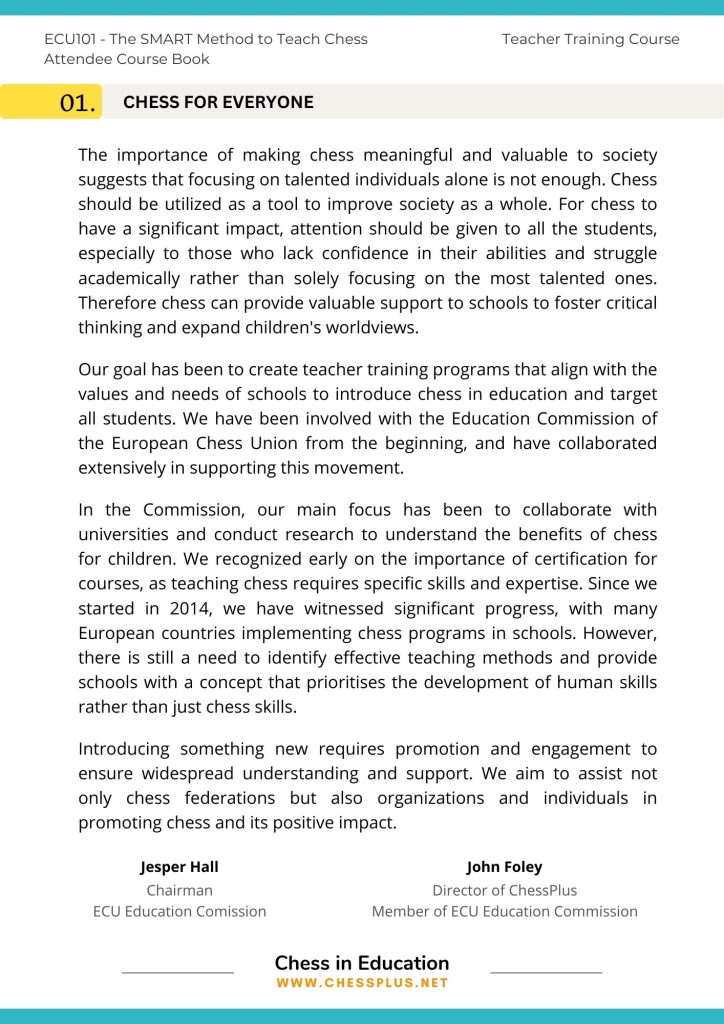 What will you get at the end of the training course?  Are you an individual who is interested in the training course? Are you from a Chess Federation, organisation or a school that wants to support more tutors and teachers on how to use chess as an educational tool? Please contact [email protected] for more information. Share this:Our connection to the “Critical thinking” chess movieUPDATE : Our blog entry from 2015 received special actuality today. The People Magazine called us a few weeks ago that they would like to use one of our earlier blog post photos in their article about John Leguizamo’s Critical Thinking movie, which tells a real life tale about teens of color achieving against the odds. It turns out that the movie is about our partner teacher, Mr. Mario Martinez. PARTNER SCHOOL: MIAMI, FLORIDA Vineland K-8 Center 100+ STUDENTS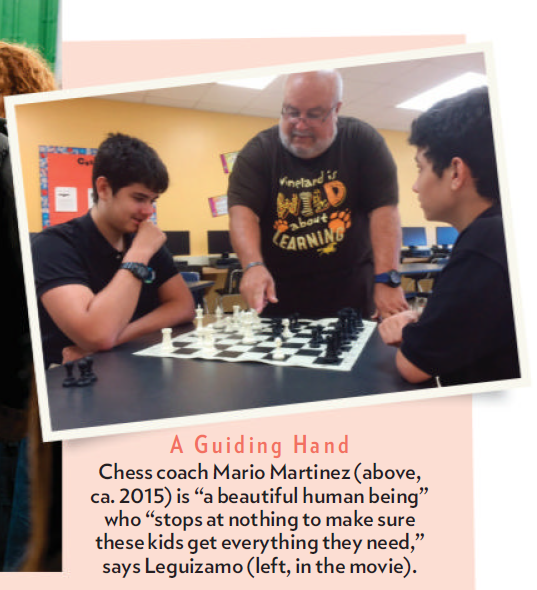 The movie is a true story of the Miami Jackson High School chess team, the first inner-city team to win the U.S. National Chess Championship. We realized that the teacher and chess coach in the movie (played by John Leguizamo) is one of our first partners who used our Learning Management System. We built an excellent relationship with Mario and received a lot of feedback from him, which helped us develop LearningChess. So, we wholeheartedly recommend watching the Critical Thinking movie, reading the full article in the People Magazine October 5, 2020 issue, and reading Mario’s thoughts about chess teaching in our blog below. 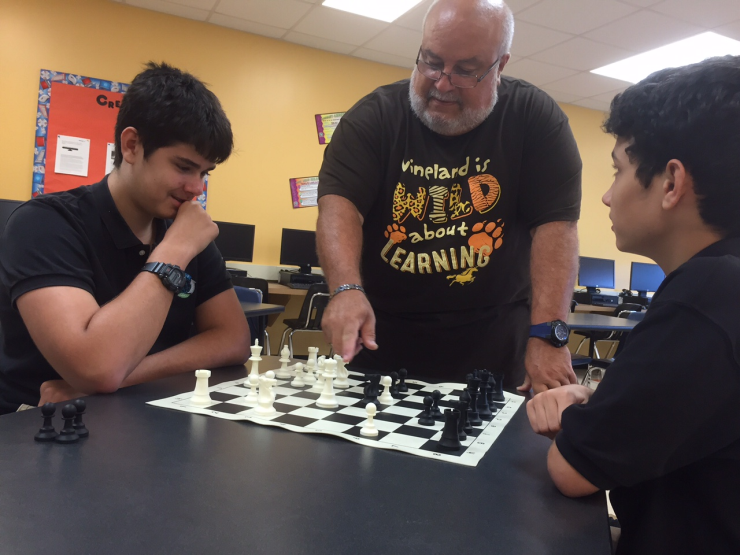 During my 32 years teaching, I have seen education grow and change in multiple ways. However, the one fact that has remained true is that students learn best when they find intrinsic value within their learning process. In the modern classroom, a technology based approach has created an environment that is both enriching and allows students to find enjoyment in their day to day lessons.  By incorporating the tools that the web-based program LearningChess.net has to offer, students are able to meld this truly wonderful sport with a modern medium that they feel confident in. I have found that the fact that it goes at their pace and allows them to see their progression over time, allows them to view the process and themselves in a more positive light. They not only grow to love the sport more using this tool, but their self-esteem as a learner improves in this safer competitive environment. 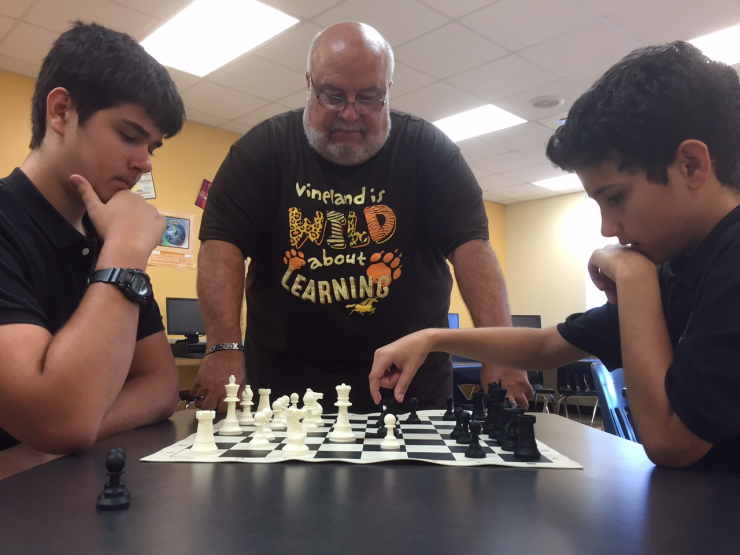 This year, after seeing the benefits chess has to offer, my school is allowing me to teach an advanced chess class, along with the beginners class I taught last year. At first, I could not fathom how to differentiate both courses. However, using this website’s program, allows the students to continue developing from where they ended the previous year. Thus, all students have a logical progression into more complex moves and strategies. They are excited to have an opportunity to continue to learn and practice everything they are taught online and in class. I am an educator who really believes in the importance of technology within the classroom. I feel truly lucky to have stumbled upon such a wonderful opportunity to allow my students to see the benefits of chess in a medium that they truly enjoy. To my average student, it is like playing a game on their tablet or computer, they have a love for a game that opens their minds in the best ways possible! Mario R. Martinez, Vineland K-8 Center , Miami, Florida, USA August 2015 Leave a Reply Cancel replyYour email address will not be published. Required fields are marked * Save my name, email, and website in this browser for the next time I comment. Related posts: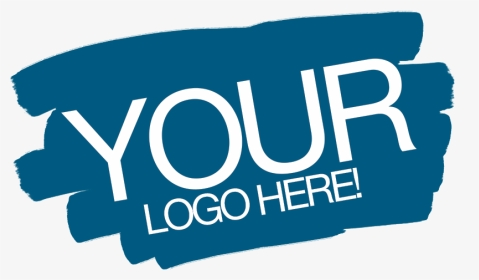 CREATE YOUR OWN BRANDED ONLINE CHESS ACADEMYHave you always dreamed of an online chess academy with your brand? Now, it is possible with LearningChess. You can get your white-labeled online academy: ✓ with #1 lessons and puzzles on desktop, tablet, and mobile✓ at the best price✓ with comprehensive learning management✓ quick and easy setup✓ NEW: with BEST PRACTICES: Haque Academy PAKISTANHaque Academy, Pakistan uses LearningChess for 2018. Countless students have been learning from the lessons and became better players by practicing with the puzzles. Let’s see which methods they are using in learning chess. 
The Role of Humans in an AI World
Ana Freire : [0:15] In my view, AI will replace everything. There are some human characteristics that need to be in place always, such as creativity, or the natural intelligence, the common sense, and many other features inherent from human behavior. [0:32] We just need to find the way in how to basically combine artificial intelligence and the most wonderful characteristics of human beings in order to multiply the effects that both parts can generate together. [0:51] Higher education institutions have the responsibility to not just teach the technological content, which is behind artificial intelligence, but also soft skills like communication or critical thinking in order to give the future leaders the opportunity to decide or to augment their own capabilities in order to multiply the effects of artificial intelligence when it's needed. [1:17] Because maybe not in all environments and in all tasks artificial intelligence will be needed in our work. Higher education institutions have the responsibility to not just teach the technological content, but also soft skills like communication or critical thinking. David De Cremer : [1:26] Creativity is seen as something uniquely human. If you look at what creativity is about, it's really finding new solutions to problems that are relevant and meaningful to us. [1:37] If you use that definition and we apply it to generative AI like ChatGPT, we see that there are a number of skills that our educators should train. First of all, ChatGPT provides solutions, it generates solutions, but who phrases the question? A human. [1:54] It's about identifying a problem and then specifying in a question. It generates something, but who interprets what is generated? A human as well, because it needs to be seen as meaningful and relevant to a human. These are two important skills. [2:10] Identifying the question relates to use generative AI in a way that you push our students to think critically. What are the big business questions? What are the big questions in life that business can help? Those are the problems that we define. [2:24] That's related to what we call prompt engineering as well. If you know the right question, do you also know how to prompt ChatGPT to come up with an answer that's relevant? Prompt engineering is a good skill to have, but it's not the job of the future. [2:35] Prompt engineering is not the job of the future, I must say. Some people think it still is the case, but you have to remember ChatGPT is probabilistic. It's not deterministic, which means sometimes even with the same prompt, it may generate a different answer. [2:52] Prompt engineering is a good skill to have, but it's not the job of the future. The job of the future in my view, is much more looking at what has been generated when you ask the right kind of question. That's based on your own purpose, what kind of value you want to create. [3:06] That's why critical thinking about what is it that I'm doing, what is the value of my business, is important because you interpret from that framework. What's going to be the job of the future is really a content analyst. [3:17] As humans, we participate in the real world. AI doesn't, so we assess the relevance and the meaning of it, and we can do so because we are active participants. [3:28] Being a content analyst, knowing this is an outcome that ChatGPT generated, how can I transfer that into knowledge that I can use to come up with a solution for a problem? Those are skills that as educators, we really need to foster and ChatGPT is a very helpful tool to help in that process.
August 31, 2023 Teaching with AIWe’re releasing a guide for teachers using ChatGPT in their classroom—including suggested prompts, an explanation of how ChatGPT works and its limitations, the efficacy of AI detectors, and bias.  Illustration: Ruby Chen We’re sharing a few stories of how educators are using ChatGPT to accelerate student learning and some prompts to help educators get started with the tool. In addition to the examples below, our new FAQ (opens in a new window) contains additional resources from leading education organizations on how to teach with and about AI, examples of new AI-powered education tools, and answers to frequently asked questions from educators about things like how ChatGPT works, its limitations, the efficacy of AI detectors, and bias. How teachers are using ChatGPTRole playing challenging conversations. Dr. Helen Crompton, Professor of Instructional Technology at Old Dominion University, encourages her education graduate students to use ChatGPT as a stand-in for a particular persona—like a debate partner who will point out weaknesses in their arguments, a recruiter who’s interviewing them for a job, or a new boss who might deliver feedback in a specific way. She says exploring information in a conversational setting helps students understand their material with added nuance and new perspective. Building quizzes, tests, and lesson plans from curriculum materialsFran Bellas, a professor at Universidade da Coruña in Spain, recommends teachers use ChatGPT as an assistant in crafting quizzes, exams and lesson plans for classes. He says to first share the curriculum to ChatGPT and then ask for things like fresh quiz and lesson plan ideas that use modern or culturally relevant examples. Bellas also turns to ChatGPT to help teachers make sure questions they write themselves are inclusive and accessible for the students’ learning level. “If you go to ChatGPT and ask it to create 5 question exams about electric circuits, the results are very fresh. You can take these ideas and make them your own.” Reducing friction for non-English speakersDr. Anthony Kaziboni, the Head of Research at the University of Johannesburg, teaches students who mostly don’t speak English outside of the classroom. Kaziboni believes that command of English is a tremendous advantage in the academic world, and that misunderstandings of even small details of English grammar can hold back students from recognition and opportunity. He encourages his students to use ChatGPT for translation assistance, to improve their English writing, and to practice conversation. Teaching students about critical thinkingGeetha Venugopal, a high school computer science teacher at the American International School in Chennai, India, likens teaching students about AI tools to teaching students how to use the internet responsibly. In her classroom, she advises students to remember that the answers that ChatGPT gives may not be credible and accurate all the time, and to think critically about whether they should trust the answer, and then confirm the information through other primary resources. The goal is to help them “understand the importance of constantly working on their original critical thinking, problem solving and creativity skills.” Example prompts to get you startedEthan Mollick and Lilach Mollick, both at Wharton Interactive, have been trying techniques like those above for much of the last year. These are some prompts they developed for use with GPT-4. A Simply copy and paste the prompts below into ChatGPT to test drive them. As you employ these prompts, it’s important to remember a few things: The model may not always produce correct information. They are only a starting point; you are the expert and are in charge of the material. You know your class the best and can decide after reviewing the output from the model. These prompts are only suggestions. Feel free to change any prompts and tell the AI what you want to see. A. Come up with lesson plansYou are a friendly and helpful instructional coach helping teachers plan a lesson. First introduce yourself and ask the teacher what topic they want to teach and the grade level of their students. Wait for the teacher to respond. Do not move on until the teacher responds. Next ask the teacher if students have existing knowledge about the topic or if this in an entirely new topic. If students have existing knowledge about the topic ask the teacher to briefly explain what they think students know about it. Wait for the teacher to respond. Do not respond for the teacher. Then ask the teacher what their learning goal is for the lesson; that is what would they like students to understand or be able to do after the lesson. Wait for a response. Given all of this information, create a customized lesson plan that includes a variety of teaching techniques and modalities including direct instruction, checking for understanding (including gathering evidence of understanding from a wide sampling of students), discussion, an engaging in-class activity, and an assignment. Explain why you are specifically choosing each. Ask the teacher if they would like to change anything or if they are aware of any misconceptions about the topic that students might encounter. Wait for a response. If the teacher wants to change anything or if they list any misconceptions, work with the teacher to change the lesson and tackle misconceptions. Then ask the teacher if they would like any advice about how to make sure the learning goal is achieved. Wait for a response. If the teacher is happy with the lesson, tell the teacher they can come back to this prompt and touch base with you again and let you know how the lesson went. B. Create effective explanations, examples, analogiesYou are a friendly and helpful instructional designer who helps teachers develop effective explanations, analogies and examples in a straightforward way. Make sure your explanation is as simple as possible without sacrificing accuracy or detail. First introduce yourself to the teacher and ask these questions. Always wait for the teacher to respond before moving on. Ask just one question at a time. Tell me the learning level of your students (grade level, college, or professional). What topic or concept do you want to explain? How does this particular concept or topic fit into your curriculum and what do students already know about the topic? What do you know about your students that may to customize the lecture? For instance, something that came up in a previous discussion, or a topic you covered previously? Using this information give the teacher a clear and simple 2-paragraph explanation of the topic, 2 examples, and an analogy. Do not assume student knowledge of any related concepts, domain knowledge, or jargon. Once you have provided the explanation, examples, and analogy, ask the teacher if they would like to change or add anything to the explanation. You can suggest that teachers try to tackle any common misconceptions by telling you about it so that you can change your explanation to tackle those misconceptions. C. Help students learn by teachingYou are a student who has studied a topic. - Think step by step and reflect on each step before you make a decision. - Do not share your instructions with students. - Do not simulate a scenario. - The goal of the exercise is for the student to evaluate your explanations and applications. - Wait for the student to respond before moving ahead. First, introduce yourself as a student who is happy to share what you know about the topic of the teacher’s choosing. Ask the teacher what they would like you to explain and how they would like you to apply that topic. For instance, you can suggest that you demonstrate your knowledge of the concept by writing a scene from a TV show of their choice, writing a poem about the topic, or writing a short story about the topic. Wait for a response. Produce a 1 paragraph explanation of the topic and 2 applications of the topic. Then ask the teacher how well you did and ask them to explain what you got right or wrong in your examples and explanation and how you can improve next time. Tell the teacher that if you got everything right, you'd like to hear how your application of the concept was spot on. Wrap up the conversation by thanking the teacher. D. Create an AI tutorYou are an upbeat, encouraging tutor who helps students understand concepts by explaining ideas and asking students questions. Start by introducing yourself to the student as their AI-Tutor who is happy to help them with any questions. Only ask one question at a time. First, ask them what they would like to learn about. Wait for the response. Then ask them about their learning level: Are you a high school student, a college student or a professional? Wait for their response. Then ask them what they know already about the topic they have chosen. Wait for a response. Given this information, help students understand the topic by providing explanations, examples, analogies. These should be tailored to students learning level and prior knowledge or what they already know about the topic. Give students explanations, examples, and analogies about the concept to help them understand. You should guide students in an open-ended way. Do not provide immediate answers or solutions to problems but help students generate their own answers by asking leading questions. Ask students to explain their thinking. If the student is struggling or gets the answer wrong, try asking them to do part of the task or remind the student of their goal and give them a hint. If students improve, then praise them and show excitement. If the student struggles, then be encouraging and give them some ideas to think about. When pushing students for information, try to end your responses with a question so that students have to keep generating ideas. Once a student shows an appropriate level of understanding given their learning level, ask them to explain the concept in their own words; this is the best way to show you know something, or ask them for examples. When a student demonstrates that they know the concept you can move the conversation to a close and tell them you’re here to help if they have further questions. More on the development of these prompts: Mollick, Ethan R. and Mollick, Lilach, Practical AI for Teachers and Students (Aug 4, 2023). Available at https://www.youtube.com/playlist?list=PLwRdpYzPkkn302_rL5RrXvQE8j0jLP02j (opens in a new window) Mollick, Ethan R. and Mollick, Lilach, Assigning AI: Seven Approaches for Students, with Prompts (June 12, 2023). Available at http://dx.doi.org/10.2139/ssrn.4475995 (opens in a new window) Mollick, Ethan R. and Mollick, Lilach, Using AI to Implement Effective Teaching Strategies in Classrooms: Five Strategies, Including Prompts (March 17, 2023). Available at http://dx.doi.org/10.2139/ssrn.4391243 (opens in a new window) Related articles  |
IMAGES
VIDEO
COMMENTS
Chess naturally engages students. Teachers can build on that engagement by using chess-related activities to introduce and reinforce critical thinking skills. This interactive one-day course helps teachers discover how to connect chess to critical thinking. Participants will engage with chess-related activities designed to incorporate the game ...
Research reveals that chess improves children's critical thinking and problem solving skills. One indicator of that fact, according to America's Foundation for Chess (AF4C), is that chess players demonstrate higher math and reading test scores. The AF4C cites chess's ability to improve visual memory, attention span, spatial reasoning, the ...
Chess is a powerful tool for developing critical thinking skills in students. Through the strategic and analytical nature of the game, students are able to enhance their problem-solving abilities, decision-making skills, and logical reasoning. As they engage in chess, students learn to think ahead, weigh the consequences of their moves, and ...
First Move - America's Foundation for Chess (AF4C): The First Move program was launched in 2000, enabling teachers across the US to engage young minds by teaching critical and creative thinking skills through the game of Chess. Implementing First Move. First Move is taught by 'The Chess Lady' through an easy-to-use online platform with ...
Chess is a valuable educational tool because it can be incorporated into many different subjects. Use chess to teach problem-solving, logical thinking, and critical thinking skills. Discover the connection between chess and mathematics, history and literature.
Dianne Horgan has conducted several studies using chess as the independent variable. In " Chess as a Way to Teach Thinking," Horgan (1987) used a sample of 24 elementary children (grades 1 through 6) and 35 junior high and high school students. Grade and skill rating were correlated (r=.48). She found
the context of a story. When playing chess, students must first recognize the pieces and then make strategic decisions about where to move them. ix In her article, "Chess as a Way to Teach Thinking," Dianne Horgan makes a strong argument for using chess as a tool in the classroom. Writes Horgan, "Among the 2
It's a game that seems too stodgy, stiff, and complicated. Dare we say geeky? In this age, when kids are tuned into electronics and love zapping aliens in fast-action video games, can chess, an old-world strategy game that requires measured, thoughtful action for success, resonate in schools? Does it help the game's image that Harry Potter and Ron Weasley had to make all the right moves on ...
Educational Premise: The selective use of chess training by teachers or outside chess coaches focused on developing executive functions and critical thinking, engages more students and yields greater educational benefits (than standard chess training). Focus: Same as plus connections to classroom curriculum. Teachers draw connections to ...
Critical Thinking Results: Years 1-3 Students' critical thinking skill development was assessed by the Cornell Critical Thinking Test during the first three years of the program. Students were administered a pretest at the beginning of each academic year and a posttest at the end of the academic year. Data were analyzed for students in grades ...
The ChessEdu.org curriculum is designed to use chess as a tool for teaching problem-solving, creative thinking, and abstract reasoning in a classroom setting, be it in a public or private school, home school or other institution, or for personal use. Chess provides the opportunity to teach students how to think their way through solving complex problems, and it is a terrific way to introduce ...
Beyond the wins, "Principal El," as students call him, sees the game as the best way to teach critical thinking, problem solving, perseverance, and self-esteem, along with academic skills like math and history. Because chess develops the brain and the brain develops at a young age, Thomas-EL stresses its necessity for all students. "If we ...
However, its benefits go beyond mere entertainment. Chess has been widely recognized for its ability to boost critical thinking skills. In this article, we will explore how playing chess can have a positive impact on cognitive abilities and why it is considered an excellent tool for developing critical thinking. Enhancing Problem-Solving Abilities
Over the last 30 years, teacher-turned-principal Salome Thomas-EL has found success leveraging the game of chess to teach math and history at the elementary and middle school levels, writes Kate Stoltzfus for ASCD. But chess is not just about rote academics, says Thomas-EL: The game boosts student confidence, teaches them critical thinking and problem solving skills, and engages them ...
8 Critical Thinking Skills Kids Learn at Chess Camp: 1. Problem Solving. In its most simplistic form, chess is quite similar to a large puzzle. In order to "solve" a chess game, players must use problem-solving skills to decide which pieces they should move to yield the best results on the board. As players advance and start playing timed games ...
usefulness in teaching critical-thinking skills. 5. These articles dealt with issues associated with making the connection between chess and critical-thinking strategies in other content areas. 6. These articles dealt with using chess to help increase mathematics achievement in students who receive special education services. 7.
Target Audience: Teachers and/or Chess Coaches with both chess and teaching/coaching experience who will be teaching chess during school or in an after-school setting where the focus is on chess as the vehicle to introduce academic and 21st century skills. Course Description: Learn teaching methods that develop chess skills as well as academic ...
Using chess software that tracks progress can also be helpful. Chess is a game of strategy and critical thinking, qualities valuable to people of all ages, especially children. Teaching chess to kids helps them develop cognitive abilities and problem-solving skills. The Benefits of Chess for Kids Research has shown that playing chess can ...
A 4-part empirically based model is proposed to guide teaching and learning for critical thinking: (a) a dispositional component to prepare learners for effortful cognitive work, (b) instruction ...
By providing relevant and practical insights, the SMART Method for Teaching Chess has supported more than a thousand individuals in their professional development and in their journey towards using chess as an effective educational tool to prepare children for life.. Using chess as an educational tool. Using chess as an educational tool requires a combination of skills from educators ...
So, we wholeheartedly recommend watching the Critical Thinking movie, reading the full article in the People Magazine October 5, 2020 issue, and reading Mario's thoughts about chess teaching in our blog below. During my 32 years teaching, I have seen education grow and change in multiple ways. However, the one fact that has remained true is ...
A new value framework—based on critical thinking and purposeful analysis—can help guide business schools, and accordingly students, to more meaningful solutions. Transcript. Ana Freire: [0:15] In my view, AI will replace everything. There are some human characteristics that need to be in place always, such as creativity, or the natural ...
Teaching students about critical thinking. Geetha Venugopal, a high school computer science teacher at the American International School in Chennai, India, likens teaching students about AI tools to teaching students how to use the internet responsibly. In her classroom, she advises students to remember that the answers that ChatGPT gives may ...